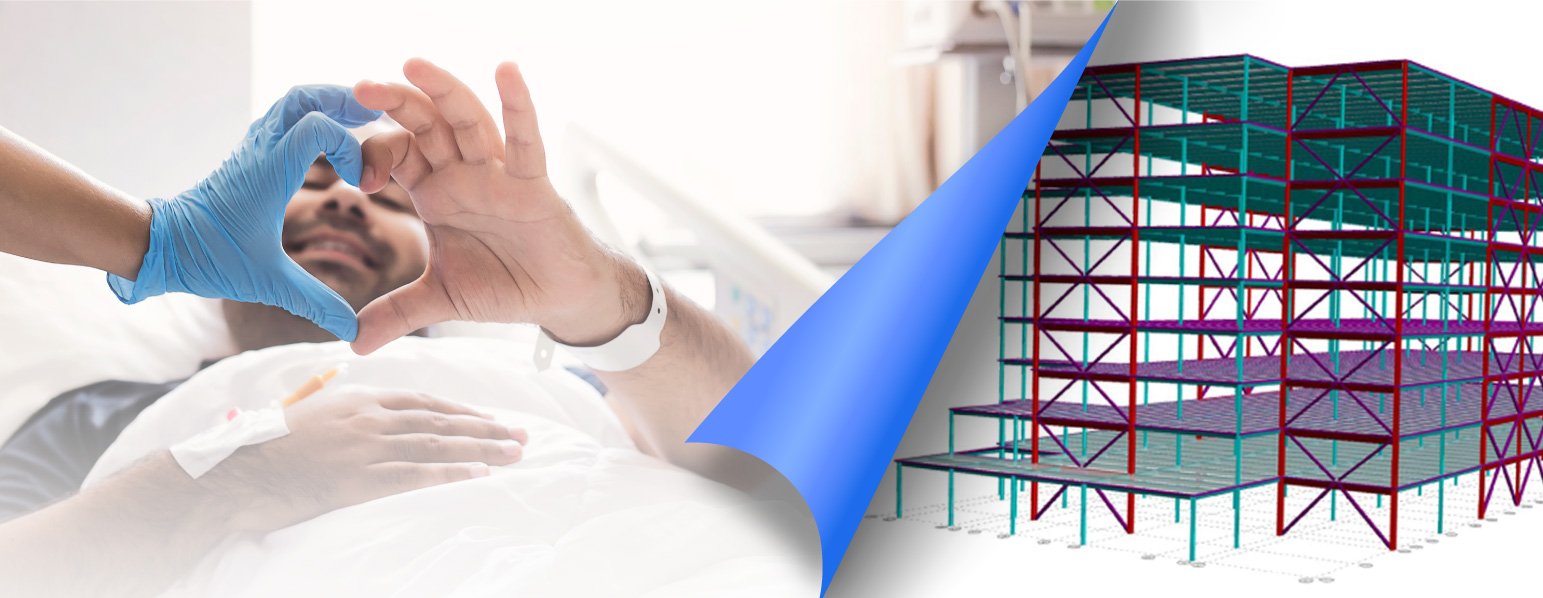
WE SEE
ABOVE &
BEYOND.
Structural Engineers design hospitals inside and out so Healthcare Heroes can heal patients inside and out.
Structural Engineers contribute to resilient communities, and even more so when designing hospital structures. Classified as essential structures, hospitals are designed to higher standards. They must be functional and support their community regardless of external events. The structural design is coordinated with other project members, including architects, construction firms, and the owner, to understand “who”, “what”, and “how”.
The “who” speaks to occupants – staff, patients, and visitors – and their needs and wants such as a quiet room for rest and recuperation. The “what” includes the types of initial and potential equipment used, such as an MRI machine, and vibration sensitivity limits. The “how” considers myriad options to address travel paths, vibration limits, and sound control, such as slab depressions, trenching, and steel reinforcements.
Structural Engineers focus on the skeleton of hospital buildings so doctors, nurses, and staff can focus on you.
Structural Engineering Excellence for Healthcare
Structural engineers control vibration and unwanted noise in order to provide a sound place for rest and recovery. All buildings vibrate and move. In fact, they are CONSTANTLY moving. The movements are so small that patients don’t perceive them. While imperceptible to us, specialized equipment, like MRIs, may perceive these small motions and it could really impact their accuracy.
In a hospital setting, one of the most important things structural engineers provide is “vibration control”. They design for tiny vibration/movement tolerances in a variety of ways. First, they analyze footpaths and known vibration sources. Next, they design a system that doesn’t move more than the specified equipment’s limitations. Addressing vibration is just one example of how structural engineers deliver excellence. Structural engineers SEE Above & Beyond the everyday things that impact our experiences, especially in hospitals.

